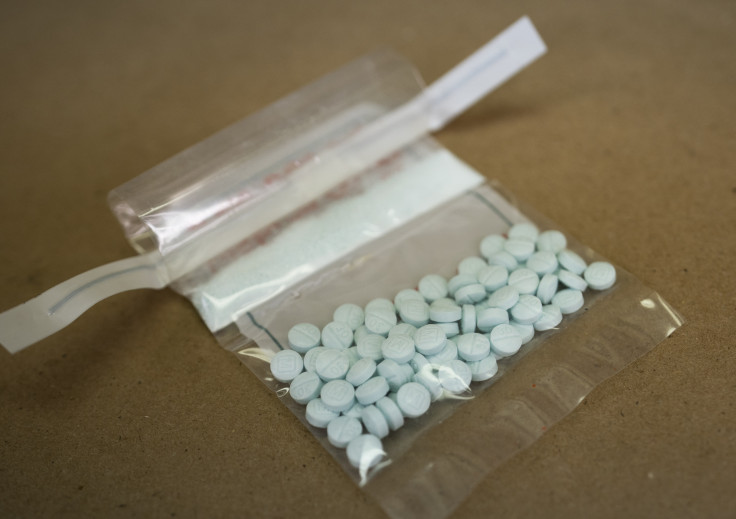
A clearer picture of the fentanyl emergency is emerging across the Caribbean and Central America. Puerto Rico is counting historic losses of life. Costa Rica is confronting signs of local pill production. The Dominican Republic features in U.S. financial red-flag reports and transnational indictments. The surge comes as the United States sharpens its posture in Caribbean waters near Venezuela.
An investigation conducted by journalists from newspapers of Grupo Diarios de América, among them Colombia's El Tiempo, revealed the expansion of the fentanyl presence in the region.
Puerto Rico's Institute of Forensic Sciences reports 1,788 deaths involving fentanyl between 2022 and 2024, exceeding 1,071 homicides in that same period. Local coverage says fentanyl appears in the majority of drug-related autopsies. "These figures reflect a public health crisis that continues to impact our communities," said Tony Velázquez, spokesperson for the DEA in Puerto Rico, to the Nuevo Día newspaper.
U.S. agencies have intensified interdictions. Data from the Department of Justice revealed that in March 2025, a joint operation led by the U.S. Postal Inspection Service seized 577 pounds of cocaine and 14 pounds of fentanyl in mail shipments moving from San Juan to multiple U.S. destinations. The Justice Department also announced fentanyl trafficking indictments on the island this spring.
Costa Rica: Tablet presses and a spike in counterfeit pills
Authorities in San José have logged a sharp jump in pill seizures and are investigating suspected local pill pressing. In February 2025, anti-drug agents seized 30,000 fentanyl tablets and arrested two suspects, including a Dominican national with prior serious offenses. The Health Ministry has warned about synthetic drugs mixed with fentanyl, as police report equipment consistent with small-scale production. "We have solid indications of artisanal production," said Manuel Jiménez Steller, vice minister overseeing special units.
Dominican Republic: Transit node, online pharmacies and illicit finance
While authorities do not report a domestic overdose spike, the Dominican Republic is appearing in U.S. financial intelligence tied to fentanyl trafficking. In April 2025, the U.S. Financial Crimes Enforcement Network said banks filed 1,246 suspicious activity reports that identified about $1.4 billion in transactions linked to fentanyl activity. Analysts flagged networks that included pharmacy websites shipping counterfeit pills. U.S. prosecutors have also detailed Dominican-connected logistics in federal cases, including multi-jurisdiction pill operations that reached buyers in the mainland U.S. and Europe.
Beyond the big three: emerging activity in Central America and the Caribbean
Regional enforcement has started to intercept fentanyl and precursors beyond the usual corridors:
- Honduras: Police and prosecutors reported seizing ampoules of pharmaceutical fentanyl in a May 2025 operation. The DEA also announced the January 2025 extradition of a Honduran national on fentanyl conspiracy charges.
- Guatemala: Security forces have stepped up alerts about fentanyl's arrival, and media report multiple interdictions since 2023, while police call it a growing threat for gangs and traffickers.
- Panama and the maritime approaches: Multi-agency operations in the Eastern Pacific and Caribbean continue to offload historic volumes of narcotics, demonstrating sustained pressure on maritime routes that criminal networks use for poly-drug shipments.
- Regional baseline: UNODC's 2024 and 2025 reporting notes Latin America's expanding role in synthetic drug markets, while U.S. State Department narcotics control reports highlight new opioid risks in the Caribbean basin.
U.S. operations in the Caribbean and the Maduro factor
Washington has moved from routine Coast Guard interdictions to a far more muscular stance near Venezuela. In recent days, U.S. forces conducted a deadly strike on a Venezuelan vessel near Puerto Rico, killing 11 suspected traffickers. Defense leaders visited the island as the Pentagon weighs using Puerto Rico as a regional hub for counternarcotics operations. Media reports additional warships in the theater and a deployment of F-35 jets to support missions against Latin American cartels.
Senior U.S. officials are tying that buildup to Nicolás Maduro's patronage networks and the presence of Venezuelan criminal groups. The administration and Pentagon leaders have cited Tren de Aragua and allied actors as targets, framing parts of the campaign as a response to Venezuela-linked "narco-terrorism." "We will not allow criminal organizations that profit from fentanyl to operate with impunity in our near seas," one senior official said during the Puerto Rico visit, as critics in Congress questioned the legal basis for cross-border strikes.
Why this matters for U.S. readers
The crisis is already costing lives in a U.S. territory while supply chains diversify across the region. Puerto Rico's fatality curve shows the human toll. Costa Rica's suspected pill production increases the risk of mislabeled tablets entering street markets. The Dominican Republic's role in online sales and money flows illustrates how fentanyl traffickers exploit finance and shipping. The United States is responding with seizures, financial scrutiny, and a sharpened military posture. Whether that combination can reduce deaths without widening regional conflict is the question that now dominates the day after.
© 2025 Latin Times. All rights reserved. Do not reproduce without permission.







